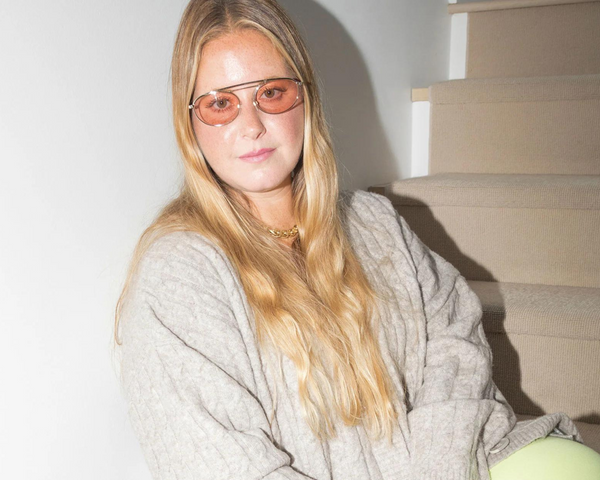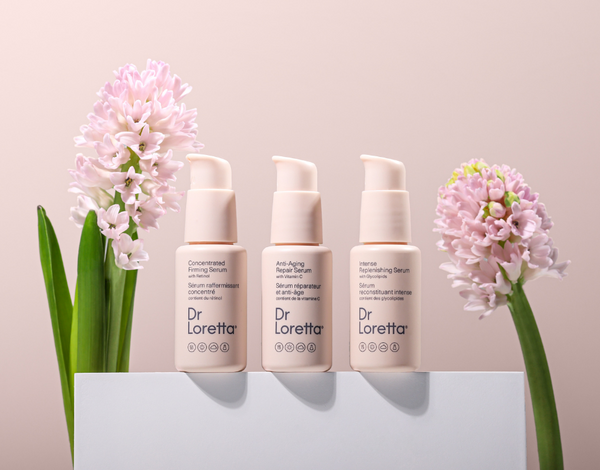Q: What is blue light and is it connected to UV rays and other photo-aging culprits? How does it differ from blue LED light?
A: There is only one blue light but there are different sources of blue light, each of which has a different amount of blue light that it emits. Blue light is the spectrum of visible light that has the wavelength of 400 - 500 nanometers. The most common sources of blue light are the sun and digital screens.
More blue light is emitted by the sun than UVA and UVB combined. The graph below shows the amount of each type of wavelength emitted by the sun. But until recently there hadn't been much study done to evaluate the effects of blue light on our skin. The most studied effects have been how blue light can kill precancerous cells, leading to the treatment called Blue Light Photodynamic Therapy and blue light for acne, since blue light kills the P acnes bacteria associated with acne.
Q: Does blue light damage your skin? If so, in what ways and with how much exposure (both daily and over time)?
A: There are two types of studies to show how blue light can damage our skin.
In the first set of studies, human volunteers had their skin exposed to either blue light or UVA in the same proportions as we get from the sun. The blue light caused more redness, swelling and hyperpigmentation than UVA (the wavelength we typically blame for these changes). But this damage was seen only in skin types that were capable of tanning, so called Fitzpatrick types 3-6.
The other type of study done is to show that when skin cells in culture are exposed to blue light enzymes are activated that breakdown collagen. This means that blue light is associated with wrinkling since wrinkles are the result of collagen breakdown.
There aren't enough studies into the effects of blue light from our digital devices to know how much we can tolerate before it becomes hazardous but it is safest to protect yourself from blue light by wearing blue light filtering eyeglasses and skincare when you will be in front of the computer or in the sun for any extended period.
Q: Does blue light damage affect people with certain skin types, tones, or conditions over others?
A: It seems to be more harmful in people with the ability to hyperpigment and people of color.
Q: What specific skincare ingredients can help reduce the harmful effects of blue light on the skin?
A: Three skincare ingredients that help protect our skin from visible light are:
- Indian Ginseng, also known as ashwagandha, is a natural ingredient that has had extensive laboratory testing to prove that it protects skin cells from the harmful effects of HEV blue light including cellular damage.
Found in: Urban Antioxidant Sunscreen SPF 40
- Chromabright ® is a highly effective brightening ingredient inspired by Vitamin E that protects against free radical damage and blue light.
Found in: Intense Replenishing Serum, Tightening Eye Gel and Anti-Aging Repair Moisturizer
- Tetrapeptide-4: a highly effective peptide that provides a tightened, uplifted skin contour all while protecting from blue light damage.
Found in: Tightening Detox Mask
- Ectoin is a multifaceted super ingredient that provides protection from blue light and environmental aggressors
Found in: Universal Glow Daily Defense Mineral Sunscreen Fluid SPF 40
Q: What other healthy tech habits do you recommend to avoid blue light damage to the skin? (e.g., not squinting, wearing blue light glasses, etc.)
A: It's wise to limit our screen time each day. But since this is not always possible due to work and other obligations, set devices to night shift.
Studies Mentioned In This Blog
Coats JG, Maktabi B, Abou-Dahech MS, Baki G. Blue Light Protection, Part I—Effects of blue light on the skin. J Cosmet Dermatol. 2021;20:714–717. https://doi. org/10.1111/jocd.13837
Coats JG, Maktabi B, Abou-Dahech MS, Baki G. Blue light protection, part II – Ingredients and performance testing methods. J Cosmet Dermatol. 2021;20:718–723. https://doi.org/10.1111/jocd.13854
Arjmandi N, Mortazavi G, Zarei S, Faraz M, Mortazavi SAR. Can light emitted from smartphone screens and taking selfies cause premature aging and wrinkles? J Biomed Phys Eng. 2018;8:447‐452.


